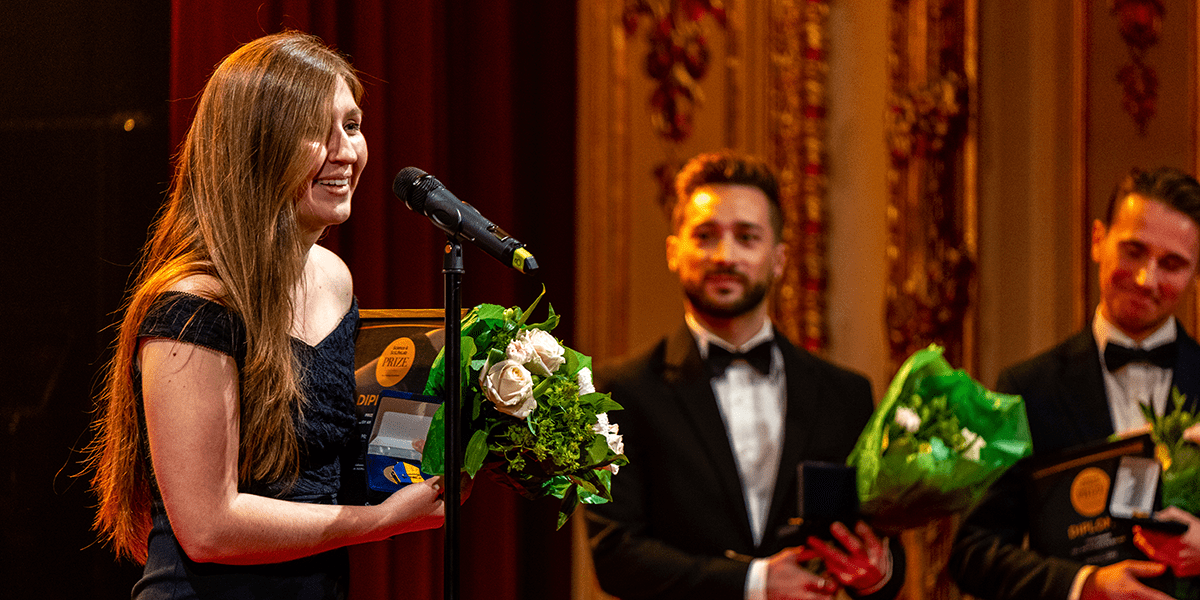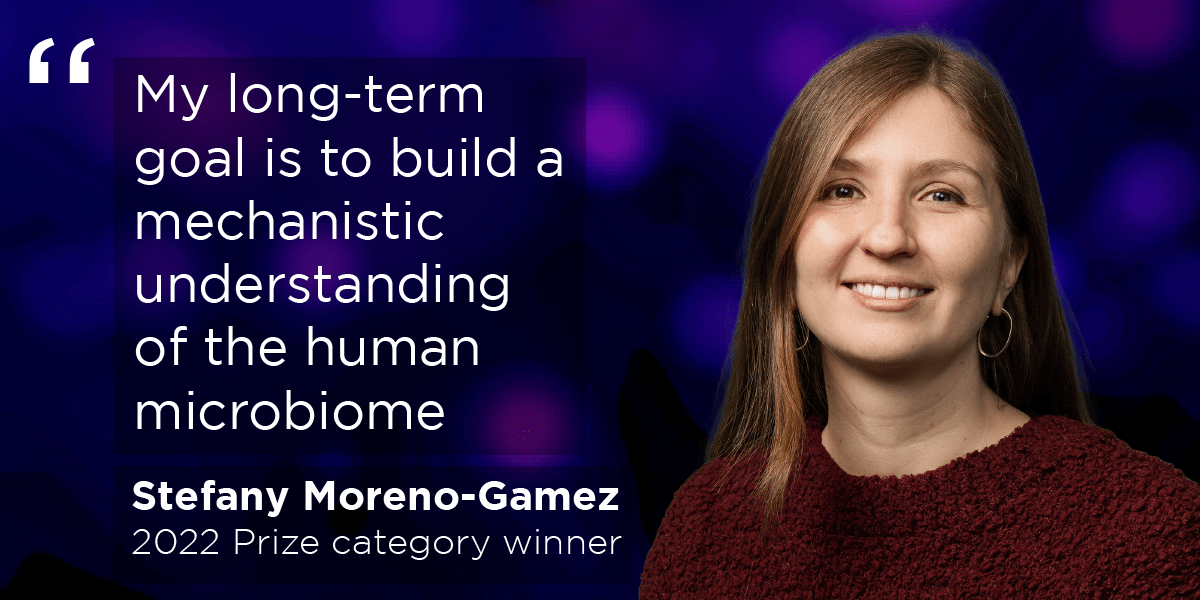Prize winner finds how bacteria cope with change
Bacteria use collective strategies to navigate their environments and are therefore more successful than they would be alone, shows Stefany Moreno-Gamez, category winner of the Science & SciLifeLab Prize for Young Scientists.
Stefany Moreno-Gamez first moved to Europe as part of the Erasmus Mundus program in Evolutionary Biology, after completing a bachelor’s degree in Bogotá. Although arriving in a dark continent with strange food and harsh winters, the European experience became a great one – much thanks to a support system in the form of other international students facing similar challenges.
“In fact, I still keep contact with many of them and I’m part of a very nice and collaborative community together with the former and current students of this program” says Stefany Moreno-Gamez.
The master’s program is, according to its own description, designed to “provide students with optimal training for an international career in evolution, with a special focus on a career in academic research”.
Taking Stefany as an example, that design certainly seems to work. She has already received several awards, including the John Maynard Smith prize in 2021, and now winning the Ecology & Environment category of the Science & SciLifeLab Prize for Young Scientists. With her current postdoctoral fellowship at MIT – supported by the James S. McDonnell Foundation and the Dutch Research Council – a career in academic research does seem likely.
Bacterial collectives
Most bacteria live in highly dynamic environments where they regularly face fluctuations in external conditions such as the presence of nutrients and stressors. To cope with these changes, bacteria need some sort of strategy.
Interestingly, Stefany Moreno-Gamez has shown that bacteria utilize collective strategies to adapt to shifting environments. In the face of uncertainty, they can for instance respond to change by diversifying phenotypically. When they do this, they make sure that some individuals are always optimally adapted to the external conditions even in the face of change.

Another strategy that bacteria use to respond to fluctuations is to sense their surroundings as a collective by secreting and responding to small molecules known as autoinducers. This helps bacteria to make better decisions because the information that one individual cell can gather about its environment is often incomplete.
Stefany likens this result to the wisdom of the crowd principle, that collectives are much better at estimating quantities than individuals – an idea that has been discussed from Aristotle to the present. It was first demonstrated in a more modern scientific manner by Francis Galton, in an article published in Nature in 1907. He examined a competition where attendees were supposed to guess the weight of a slaughtered ox. The median guess was correct within one percent of the actual weight, and the study popularized the thought that a crowd may be more successful than individuals in certain situations.
Generalist turned specialist
During her undergraduate studies in biology, Stefany was never drawn towards any specific group or type of organism, but rather she was interested in general questions about ecology and evolution. For this reason, she started her career doing mathematical modeling and worked on systems ranging from plants to humans and viruses.
At one point Stefany wanted to combine theory with experiments and needed a model system for doing experimental work. Enter bacteria.
“It didn’t take long for me to develop a genuine interest in microbes and their amazing lifestyles and biology, which is what has kept me in microbiology until now” says Stefany Moreno-Gamez.
Currently, Stefany’s research is focused on understanding the human microbiome. Our bodies are home to trillions of bacterial cells that have a major effect on our health. So far, it has been established how the composition of the microbiome correlates with a variety of factors such as diet, genetics, and disease. Why most of these correlations exist is still a mystery, however. A mystery Stefany Moreno-Gamez has her mind set on unraveling and is exploring now by studying the evolution of resource utilization strategies in the gut microbiome.
“My long-term goal is to build a mechanistic understanding of the human microbiome by establishing how broader ecological and evolutionary patterns are linked to the underlying physiology and interactions of individual microbes” says Stefany Moreno-Gamez.





